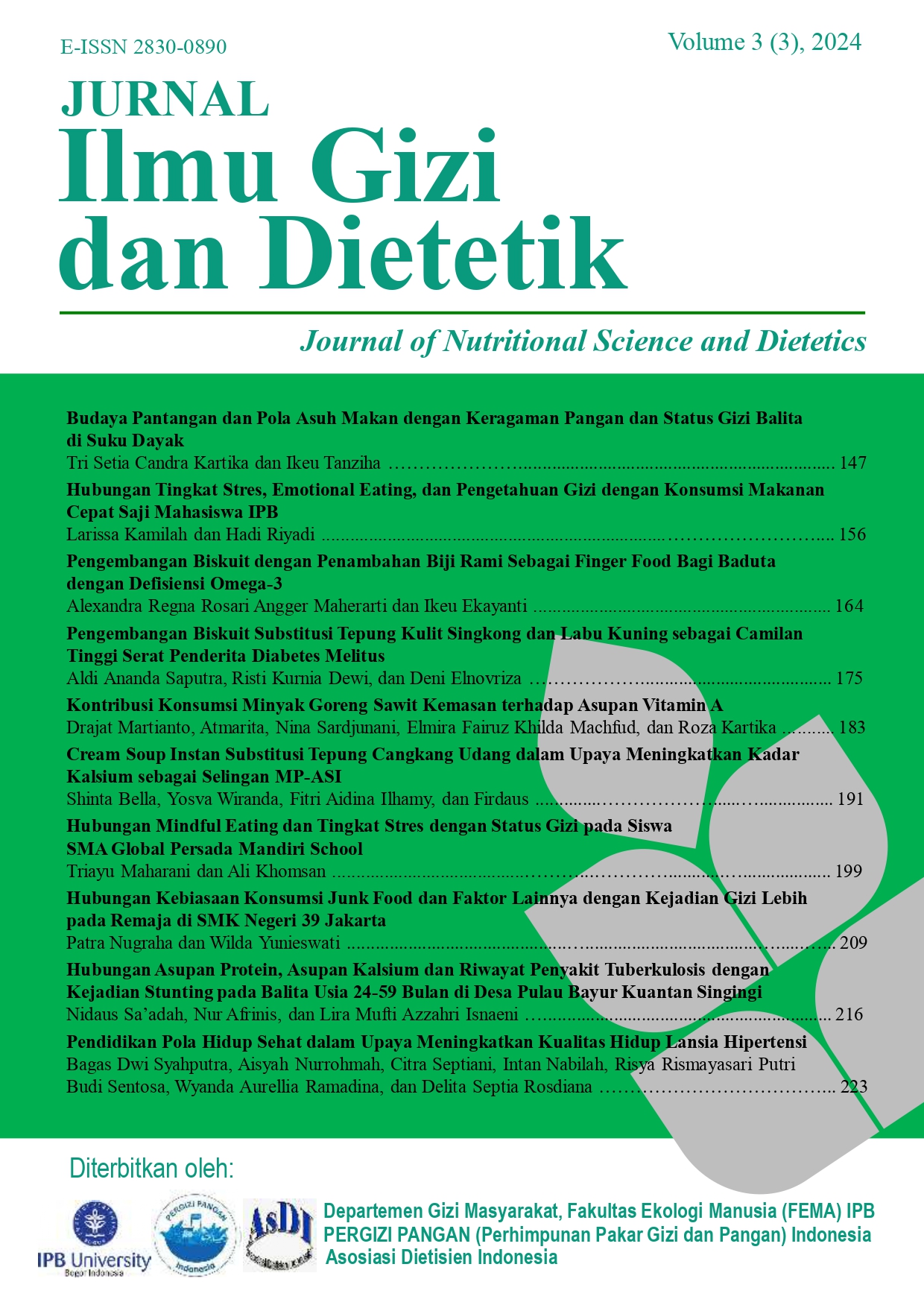Kontribusi Konsumsi Minyak Goreng Sawit Kemasan terhadap Asupan Vitamin A Contribution of Packaged Palm Cooking Oil Consumption toward Vitamin A Adequacy
Abstract
Vitamin A deficiency can cause serious health problems ranging from visual impairment to blindness, as well as growth and immune system disorders. In addition to high-dose Vitamin A supplementation, efforts to fortify vitamin A in palm cooking oil have been initiated by the government as a mandatory fortification program since implementing the 2012 Indonesian National Standard (SNI) for Palm Cooking Oil for packaged palm oil. This study aims to determine the contribution of fortified packaged cooking oil consumption to the vitamin A intake adequacy of the Indonesian population. The results of calculations using the Estimated Average Requirement (EAR) from the 2014 Individual Food Consumption Survey (SKMI) data showed that the proportion of vitamin A inadequacy in the Indonesian population was 59%, with the most significant proportion occurring in the group of pregnant women which almost reached 70%. The results of the data analysis showed that the average consumption of packaged palm cooking oil was only 14.99%. The remaining 85% was consumption of bulk palm cooking oil, which was generally consumed by low-income people who were very likely to be deficient in vitamin A due to the low quality of their diet. Oil fortification to overcome vitamin A deficiency without including bulk oil is less effective because it does not target the most vulnerable low-income groups. Therefore, regulations to require fortification of all palm cooking oil through mandatory packaging of palm cooking oil and following the Indonesian National Standard (SNI) provisions are very necessary.

